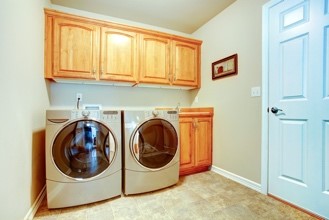Statistics show that clothes washers and dryers cause an estimated 10% of structure fires in non-high rise apartment buildings, and many of those originated in clogged dryer vents.1 If you provide laundry services in your facility, you can help prevent dryer vent fires by making sure your equipment is properly installed and taking steps throughout the year to keep it well-maintained.
Use a qualified professional for installation and service
While some building owners rely on the local handyman to install and service their washers and dryers, most manufacturers recommend that a qualified professional, preferably someone experienced with tenant and guest laundry facilities, do the work. With a new dryer installation, you want the technician who handles the project to:
- Situate the dryers near an exterior wall, since newer dryers typically carry air and lint approximately 18 feet
- Extend the dryer ducts to the exterior of the building, and make sure they do not exhaust into walls, ceilings or other interior spaces where their water vapor will cause mildew and mold
- Use dryer ducts made of rigid or flexible metal, rather than thin foil or flexible plastic; metal is better because lint builds up more easily in foil and plastic ducts, and they’re also more likely puncture or tear
- Make sections of dryer ducts as straight and short as possible, so as to minimize drying times and the collection of lint
- Cover outside dampers so as to keep out rain, snow, dirt or animals; they should not be covered with screen or cloth, however, as these will collect lint and clog the duct
- Make sure the electrical outlets used to power the dryers have the correct amperage, and that the outlets are properly wired
Some practical advice to help keep dryers running smoothly
Once your dryers are installed and running as they should, you may not be able to check all the lint filters and dryer ducts regularly, but you can take the following steps to help keep your laundry room safe for its users:
- Keep the area around the dryers clear of excess dust, lint and combustible materials
- Always use the lint filters that come with the dryers, and advise residents to clean them before and after each cycle
- Inspect lint filters and ducts every six months and replace them if they are torn or damaged
- Inspect the outdoor dampers, making sure they open freely and are not clogged or blocked
Signs that a dryer is performing poorly
There are several fairly easy ways to determine if the dryers in your facility need your attention. Some of these include:
- Residents are complaining that drying times are too long
- Clothes are hot to the touch when the drying cycle is complete
- The outside of the dryer is hot to the touch
- The laundry room is humid
- The laundry area smells like something is burning
- The outdoor vents do not open completely due to low-velocity air
- If you’re experiencing one or more of the problems listed above with your facility’s dryers, it may be time to call in a professional to evaluate the situation and recommend a solution
1 High-Rise Building Fires, National Fire Protection Association, John R. Hall, Jr. (9/13), p. 32.
